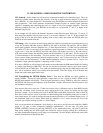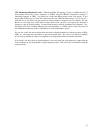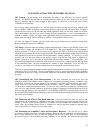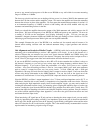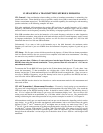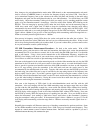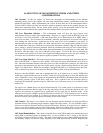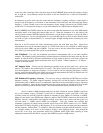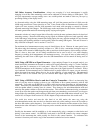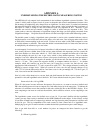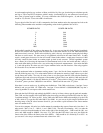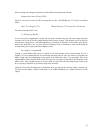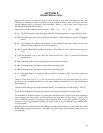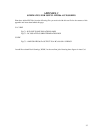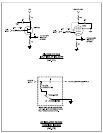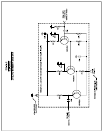31
APPENDIX A
UNDERSTANDING THE DECIBEL RATIO MEASURING SYSTEM
The HP3586 will only outputs level measurement in the nonlinear logarithmic system of decibels. This
system is widely used to express levels of power in electronic and acoustic measurements because it has
the advantage of emphasizing only changes that are significant. In other words, if you had an instrument
that measured length in inches but were measuring values around a mile in length and had a reference of
0db equal to a mile, a change of one inch would not look very important in db’s. However if your
reference was an inch and you entered a change of a mile, it would look very important in db’s. This
system tends to show the importance of significant changes but keeps you from getting concerned about
insignificant changes. I hope the discussion below will shed some light on this useful measuring system.
The decibel system is simply a logarithmic ratio system that is used to scale a standard reference value to
and then express a real world value such as feet, miles, volts, and watts. Just saying my meter reads a level
of 20db doesn’t mean anything in the real world. We have to know what it reads 20db compared to some
real world reference or standard. Then when the decibel is transformed back to a linear ratio, that ratio can
be multiplied by the reference to get a real value.
As and example, if we have a level of power in decibels of +6db referenced to one miliwatt, 1 mw or .0001
watt, usually shown as +6dbm, then to find out how many miliwatts this represents you first convert the
ratio from decibels to a linear ratio which is 4. We’ll show how to compute the linear ratio a little later.
You then multiply the ratio by 1 mw to get 4 mw, which is what +6dbm represents. Now as another
example, if we have –6dbm and want to convert it into power in miliwatts you use the same procedure to
find the ratio but since the it’s a negative db number, you divide the ratio into the reference, i.e. –6dbm =
1mw/4 = .25 mw. This system uses negative decibels to compute numbers less than 1. As another
example, which will confuse you now but later you’ll learn how it works, lets find the real value
represented of 6db referenced to .775 volts, expressed as +6db.775V. This voltage reference is used by the
HP3586 to express voltage levels. When we convert db’s into volts the ratio formula changes so for
+6db.775V in volts the linear ration will be 2 and since it was in +db you multiply 2X .775volts to get 1.55
volts. Just read on and this should be clearer.
Now let’s talk a little about how to convert back and forth between the linear ratio for power watts and
potential in volts and logarithmic ratio in decibels. We’ll start with the formula for power, which is:
Power ratio in db = 10 log (P/PR)
Where P is the power in watts, miliwatts, horsepower, flea power etc. we want to convert to decibels and
PR is the reference power we want to compare it to, both must always be in the same units. To indicate the
reference is in miliwatts we use the notation for the units as dbm just like on the HP3586’s display. If we
were comparing to one watt we could use the unit dbw, which would let us know we are comparing to one
watt.
The logarithmic system we use for decibels are to a base 10. If you aren’t familiar with the logarithmic
system, you may want to study a math book or the ARRL Handbook on the subject. In the old days we had
to use tables in math books to compute logs and their anti logs but today many inexpensive calculator will
do this for you. The log computation of the ratio converts it from a linear ratio to a logarithmic ratio.
Multiplying by ten gives us more resolution to make the decibel system better express small changes.
Now to get back from db’s to a real number for power we transpose the above formula to get the
following:
P = PR anti log (db/10)



